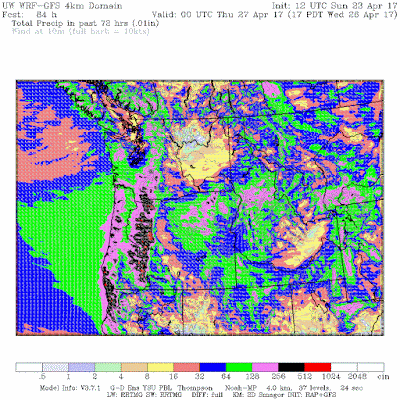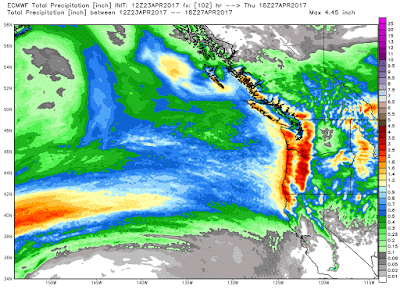On Saturday, thousands of people around the country will take part in a
March for Science. There will be a lot of well-meaning folks participating, most of them concerned about the activities and intent of the current administration.
But for reasons I will outline below, I believe they will be harming science more than helping. They will feel better for sure, but they will do little to advance the cause they care about, and possibly do long-term harm.
There are many reasons why the Science March such a bad idea.
(1) The Science March is overly political and endangers the relationship between science and society.
Science play a critical role in civic life, acting as
non-political source of information about the the natural environment and as the generator of useful technologies. Scientists are credible only when their information is considered unbiased and not politically motivated. The lack of political bias is why both sides of the aisle have supported the nation's large scientific establishment over many years.
The Science March
is clearly political and is an attempt to put pressure on the Trump administration. It will be
seen as political by everyone and particularly those it means to pressure. Furthermore, the major concern driving this march is not science in general, but of the Trump administration's appointments and future actions regarding climate science and fossil fuel regulations.
(2) The Science March Makes Science a Target
The march will identify supporters of science as being against the Trump administration, putting a big target on the back of the U.S. science establishment.
I have just finished reading my third book on Donald Trump. One thing is clear: he tends to act very aggressively against those who cross him, and particularly those that attack his public image. Do science supporters really want to provoke him unnecessarily and to little advantage?
Furthermore, there is no reason to think that Donald Trump is anti-science in general or that he really has any strong feelings about science. His anti-climate rhetoric might be similar to his pro-Russian talk: something that might rapidly alter as circumstances change. Do science supporters really want to push him into a corner?
(3) Republicans are Not Anti-Science and Can Protect Most Science If They Are Given a Chance.
Science research has generally done well when Republicans have been in control. For example, climate research funding went up substantially during the last Bush administration. Recently, the Weather Research and Forecasting Innovation Act passed the Republican-controlled Senate and House with overwhelming support. I have talked to a number of Republican staffers on critical House committees who told me that since they control the "purse" they could protect most of the science establishment.
Climate research is only a small part of the Federal scientific portfolio. Having questions about climate issues does not make one generally anti-science.
(4) The March will Fuel Partisanship and Polarization in the Nation
A key problem in the nation has been the polarization of the population and Congress. The moderate center of the country has been severely weakened, and a cultural divide has developed between the liberal coasts and the conservative interior. Between haves and have nots. Will a large protest march for science help bridge this divide? Or will it identify scientists with other, generally left-leaning, protest groups? Will those hurting economically that voted for Trump be more likely to support science after a protest? I suspect not.
This is not going to win over Trump supporters
(5) We Really Don't Know What the Current Congress Will Do Regarding Science Budgets
Congress has not passed a budget yet, so there is little information about what cut-backs or rebudgeting will occur. Why protest without knowing whether there will be significant reductions and in what areas?
(6) The March Does Not Have Clear, Explicit Goals.
Go to the the March on Science website. Try to figure out what they are marching to change. According to their website the March is a "first step of a global movement to defend the vital role science plays in our health, safety, economies, and governments." Who is trying to reduce this "vital role?" What actions
exactly are being called for?
(7) The March Organizers Will Not Control the Message
Overtly political or damaging messaging could easily be presented during the march. What is to going to stop anti administration signage? What happens if violent or disruptive protestors join the marches?
(8) There Weren't Marches When Democratic Administrations Distorted Science and Particularly Climate Science
The political nature of this march is highlighted by the fact that there was no call for protecting science or marches when Democratic administrations played fast and loose with science. A good example was the sensational and unsupportable claims of the Obama administration science adviser (John Holdren) that eastern U.S. cold waves were caused by global warming. Demonstrably wrong, but few protested this obvious distortion and politicization of science. Or the claims by NY Govenor Cuomo that Hurricane Sandy was the result of climate change. Both political parties have distorted or miscommunicated science when it was in their political interests.
A Better Approach
Instead of marching and being seen as opponents of the current administration, scientists and their supporters would be far more effective if they greatly increased their outreach to the community, communicating both the process and results of science.
Scientists should go into the community and talk about their science. Speak at local libraries, in schools, and fraternal organizations. Folks are extraordinarily interested in what we (scientists) have to say. Make an effort to connect with political leaders. Use social media (like blogs!). Nothing is more powerful than person to person contact. Help increase science literacy. In the long term, public understanding of science and the motivations of scientists is the most powerful tool for protecting the health of the nation's science enterprise.
Worried that some folks feel climate change is a hoax? A good reason to have climate scientists enhance active outreach into communities doubting the science.
I won't be out marching on Saturday, but I will continue my science outreach using this blog, my radio show on KNKX, and talks at local groups. And yes, by continuing do my science, including the
determination of the regional impacts of global warming.
Let me end, by saying that there is nothing wrong with marches against the current administration or the current Republican leadership in Congress. But don't involve science in it. If folks are honest, they would admit that
this is basically a political protest against the current leadership in DC. Perhaps the most problematic leadership in the history of our country. So have a march, but don't use science as a cover, and don't put science at risk.
Marches like this don't build bridges. And in a highly polarized society, bridges are desperately needed. Several of us have built bridges in the area of weather prediction, and this week the Weather Forecast and Research Innovation Bill was signed into law. Let's build bridges in the area of climate change. It can be done if we have the wisdom and patience to do so.




















































